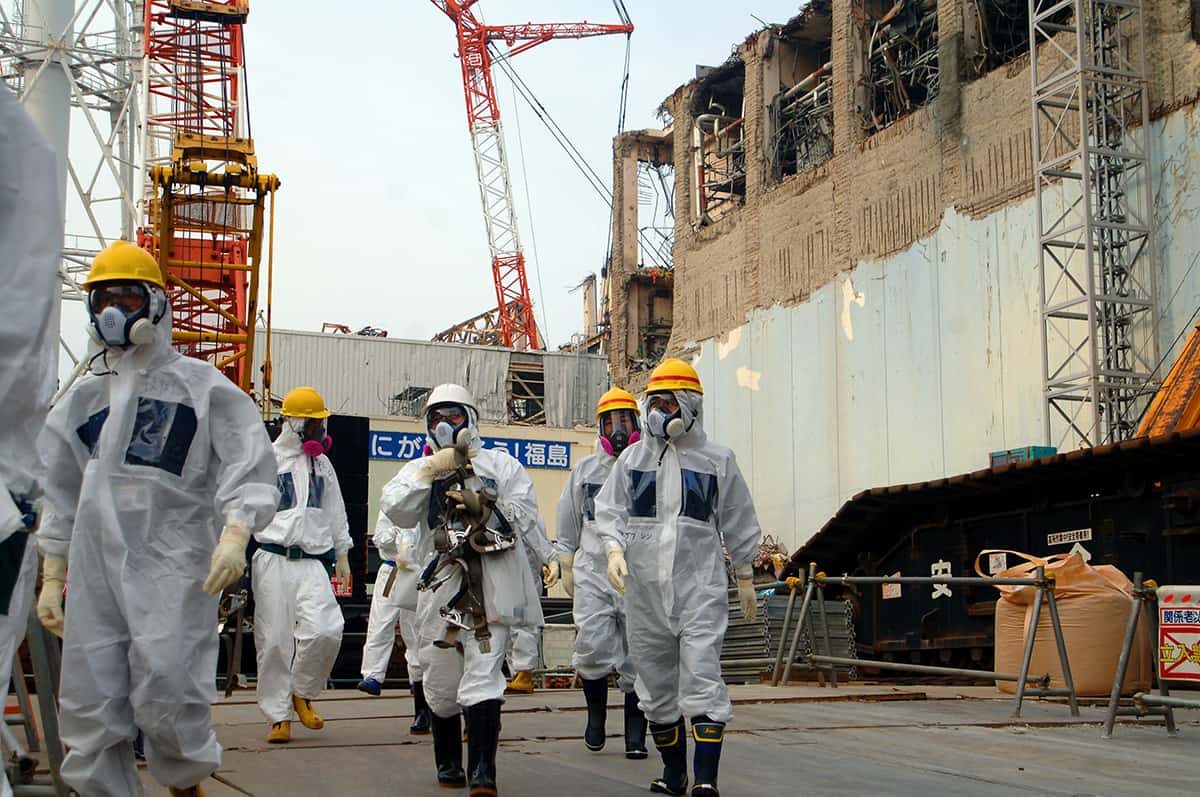Neutrons cluster in nuclear reactors
31 Jul 2021 Isabelle Dumé
The first ever live “snapshot” of an operating nuclear reactor has revealed a surprise: the neutrons in the reactor tend to cluster rather than spreading evenly. The observations, which were made by researchers in France and the US, could help improve reactor safety.
The road to this result began almost a decade ago with advances in reactor modelling at France’s Atomic Energy Commission (CEA) and the Institute for Radiological Protection and Nuclear Safety (IRSN). According to team member Eric Dumonteil of the CEA, these advances made it possible to realistically simulate the paths that neutrons take through nuclear reactors. As a result, the researchers were able to simulate all the neutrons in a reactor one by one – a major feat because reproducing the behaviour of even a low-power (milliwatt-scale) experimental nuclear reactor means simulating a staggering 1010 neutrons.
These simulations suggested not only that neutron clustering happens, but also that it could, in principle, be observed in an experimental nuclear reactor. A few years later, researchers at Los Alamos National Laboratory in the US developed a neutron detector capable of making such observations. This detector, known as Nomad (for Neutron Multiplicity 3He Array Detector), has an excellent time resolution and can therefore measure how neutrons are spatially distributed within a small reactor at a given time.
“Lineages” of clusters
In the latest work, carried out in the US at the Rensselaer Polytechnic Institute’s Reactor Critical Facility, data from the Nomad system showed that when reactor fuel undergoes fission, the results are far from uniform. While some fission events go on to produce long “lineages” of neutrons, others quickly die off. This lack of uniformity means that energy is produced asymmetrically within the reactor, the researchers explain.
By modelling the lifetime of each neutron in the reactor, the researchers built up “family trees” for each. These family trees showed that even if the number of fission events from one generation to the next remains constant (a situation known as reactor criticality), bursts and die-offs still occur. In small reactors, however, the spontaneous (that is, not induced by neutrons) fission of radioactive nuclei such as uranium-238 prevents a complete die-off, since spontaneous fission also creates more neutrons. The balance between induced and spontaneous fission tends to smooth out the energy bursts created by clustering neutrons.
Implications for safety
Dumonteil says that the team’s results could help improve the safety of nuclear reactors – especially when the reactors are started up with fresh fuel. “Nuclear reactors can be operated under safe conditions only when the neutron population no longer fluctuates in space and time,” he explains. “This stable fluctuation state is required to monitor the spatial distribution of the reactor’s power. It is therefore important to know the reactor power at which this deterministic regime appears.”
Below this stable threshold, it is also crucial for scientists to know how power is distributed within the reactors – that is, either smoothly or through neutron clusters, Dumonteil adds. Indeed, the appearance of strong spatial correlations in large reactors might, for instance, screen parts of the nuclear core that could be overreactive and would require the reactor to be shut down.
Like an epidemic outbreak
Dumonteil goes on to explain that the start-up phase of a nuclear reactor is very similar to the outbreak of an epidemic. Just as one infected individual can create other infected individuals through contamination, one incoming neutron can give rise to other neutrons through fission. The neutrons can also disappear (by being captured by nuclei), just as people can recover or die from the virus-caused disease (in which case they can’t infect others anymore).
Dumonteil says it is not surprising that both epidemics and nuclear reactors can exhibit random fluctuations. However, these fluctuations and the related emergence of patchy spatial patterns can, in some cases, be extremely important and persist over time.READ MORE

“Again, comparing to the current COVID-19 epidemic: just before global events like the onset of the disease spread around the world (in ‘waves’), it is often possible to observe spatial clusters of infected individuals that appeared (almost) at random and in particular locations, while the rest of the territory remained untouched,” Dumonteil tells Physics World. “The neutron clustering phenomenon follows the same logic: before the appearance of a large wave (the deterministic regime), strong spatial patterns appear in the neutron population.”
The researchers, who report their work in Communications Physics, say they would now like to focus on another safety-related question. “The theoretical model predicts that the phenomenon will increase in proportion to the square of the size of the core,” Dumonteil says. “We want to find out, in an experiment, if this is indeed the case.”
FROM PHYDICSWORLD.COM 15/10/2021

Δεν υπάρχουν σχόλια:
Δημοσίευση σχολίου